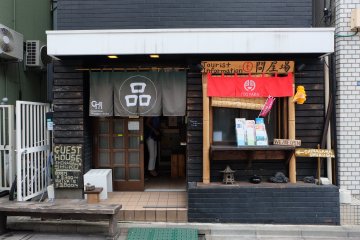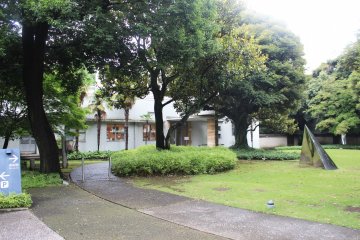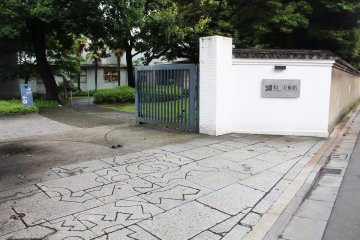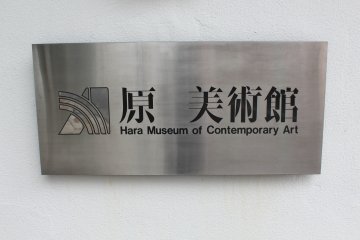Located in an avant-garde style building, the Hara Museum of Contemporary Art is a rather small museum, but the limited space is excellently used to its full potential and the rooms are very well maintained, making it a fine place to host works of art. The museum holds a satisfactory amount of artwork, just the right amount for one to enjoy at a leisurely pace. With a very well-cared for garden also on the grounds, a peaceful morning or afternoon can be enjoyed when taking this particular journey through contemporary art.
The Hara Museum of Contemporary Art is one that has a rotation of exhibits. The exhibition that I witnessed was a dedication to celebrated artist CY Twombly. Twombly is very popular in Japan, someone who is referred to as one of the ‘titans of twentieth-century art’. Inside was a collection of his works spanning over 50 years, featuring 70 drawings, paintings, and monotypes done on paper from 1953 to 2002, exemplifying the fascinating career of the artist. This current exhibition began in May 2015, and will last until August 30th, 2015.
Twombly himself was said to be one of the most widely admired artists of the 20th century. Upon reading the booklet of information in English provided by the museum, his art is referred to as ‘painted poetry’. He has a very unique style, upon which at first glance looks to be as if a child has scribbled over a canvas, or pressed their hands in various color paints and had gone a bit mad. However, this technique that Twombly quietly cultivated is said to be consistent with his early forms of ‘Abstract Expressionism’. As art evolved and moved on from this particular style, Twombly stuck to his roots and continued to apply paint to the surface of his bare hands, then spontaneously, in a free-flowing natural way, created images of great energy and sensuality. He produced art different from that within the mainstream art world at this particular time.
When walking though the museum and observing his works, I could certainly see that they were done in the spur of the moment and were very idiosyncratic forms of creativity. Quite a lot of his work I wasn’t particularly keen on, but some of his later works in the 80’s I did like a lot more. This is because he moved away from pencils and pens and focused more with paints, using deep colors that display a lot of emotion. Poetic realism in film is used to simply depict everyday lives in the most natural of ways, so I guess that when people refer to his works as ‘painted poetry’, I suppose they mean he is simply one with great energy and uses color as a form of poetry without trying to blur the lines of reality.
As mentioned this museum is pretty small, but the stylish building is a good size to allow art to be enjoyed in a less rushed manner, as opposed to huge museums where you can feel as though you need to quickly move on at times. It has a very contemporary feel about it, with very whitewashed walls. There is also a restaurant inside, which seems to be a gathering hub for the avant-garde types; this was certainly the case when I walked by.
Entry was ¥1100, which in my opinion was a bit too expensive for this museum. However, different exhibitions are held, so if there is one that particularly takes your interest then this fee would be worth the money. Therefore, it is important to check the website (a very stylish one at that) and see what exhibition is currently being held.
It is open Tuesday to Sunday from 11am to 17:00pm, with last entries at 16:30pm. On Wednesday it is open till 20:00pm and is only closed on Mondays (on the following day if Monday falls on a national holiday). Photography is prohibited inside the museum.










